-
Israel, again, beats Syria’s air defense systems
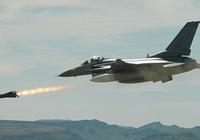
The Tuesday night Israeli air attacks against targets in Syria raise questions about the effectiveness of the vaunted Syrian air defense system. By extension, similar questions should be asked about the effectiveness of the Iranian air-defense system: both systems use similar technology, and both come from Russia.
-
-
Georgia police gets military-grade weapons
Metro Atlanta police departments and sheriff’s offices have recently acquired some new toys which include armored trucks, grenade launchers, and personnel carriers. According to the Georgia Department of Public Safety, $200 million in military equipment and weapons are owned by 600 Georgia law enforcement agencies. This military grade equipment has some people concerned as to why local law enforcement agencies are so heavily armed.
-
-
Israel’s attacks in Syria indicate Assad’s deteriorating position
Wednesday’s attacks are likely to be the first in a series of attacks which Israel will feel compelled to launch at an ever quickening pace as the Assad regime continues to disintegrate. Israel attacked targets inside Syria before, but not too often, and only when the targets were of strategic value. The deteriorating situation in Syria appears to have persuaded Israel that it has no choice but to renew its military operations inside Syria.
-
-
Pentagon to bolster U.S cyberwar capabilities
The Department of Defense is planning an expansion of the U.S. Cyber Command, and the Pentagon plans on recruiting thousands of code crackers, online security professionals, and hackers in order to assemble the nation’s largest cyber army ever.
-
-
Military electronic devices disappear into the surroundings after use
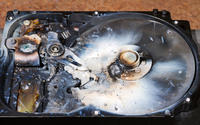
Electronic devices have become necessary for military operations, but it is almost impossible to track and recover every device. At the end of operations, these devices are often found scattered across the battlefield and might be captured by the enemy and repurposed or studied to compromise DoD’s strategic technological advantage. New DARPA program — Vanishing Programmable Resources (VAPR) program — seeks transient electronics, that is, devices which would maintain the current functionality and ruggedness of conventional electronics, but, when triggered, be able to degrade partially or completely into their surroundings.
-
-
U.S. to build drone base in Niger
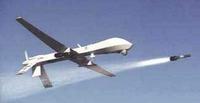
With the war in Mali raging, the U.S. Africa Command is now establishing a drone base in northwest Africa in order to bolster U.S. surveillance – and operational — capabilities against Islamist groups in the region. Initially, the drones flying from the base will conduct unarmed surveillance missions, but there is little doubt that if targets present themselves, these drones will be equipped with missiles and go on hunting-killing missions.
-
-
DoD to use connections to stay ahead of cyber threats
The Department of Defense (DoD) maintains one of the largest computer networks in the world. The network follows DoD personnel across the globe collecting, transferring, and processing information in forms as diverse as data warehouses, in-the-field mobile devices, and mission computers on board F-18’s. New program looks at how information is connected and moves to uncover and prevent targeted attacks.
-
-
French forces push deep into north Mali, capture Gao
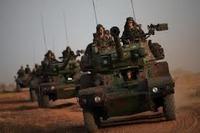
French military forces, supported by Malian forces, continue to push north into Islamist-controlled north Mali, and on Saturday captured the strategic city of Gao. French prime minister Jean-Marc Ayrault said that having chased the Islamists out of the Gao region, the French force was closing in on Timbuktu, north Mali’s main city. The initial phase of the military operation consists of liberating the large population centers of north Mali from Islamist control, and chasing the jihadists into the empty desert – and do so before the rainy season begins in March.
-
-
U.S. bolsters its military capabilities in the Gulf
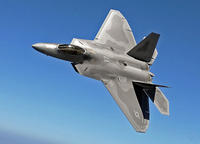
The United States has bolstered its military capabilities in the Gulf by stationing six stealth F-22 Raptors at the al Dafra air base, 150 miles from Iran. The F-22 is the most advanced plane in the U.S. arsenal – and also the most expensive, at about $150 million a plane. The F-22 can carry eight smart bombs which it can simultaneously direct at four different targets on the ground – and do so at supersonic speed while evading enemy’s radar.
-
-
Algeria: use of overwhelming force against hostage-takers was necessary
As the grim toll of the 4-day operation to wrest control of the Algerian gas drilling site becomes clearer, debate continues about the tactics the Algerian military pursued, which some in Western capitals consider rushed and heavy-handed. Algeria says it had no choice: the initial plan of the terrorists was to grab two-dozen foreign workers, take them to the nearby airport of Amena, hijack a plane, and fly them to Mali, then ask Western government for a hefty ransom. When that plan failed, the terrorists began preparations to blow up the entire complex, killing themselves and the 790 workers kept as prisoners on the site. Algeria says that if it did not act quickly, and with overwhelming force, the death toll would have been far higher.
-
-
New approach to military manufacturing

In the past, fighter aircraft, tanks, and other complex military systems have been built in a craftsman-like process by a small number of highly specialized contractors. This is a costly approach and DARPA is attempting to replace it with a more efficient “correct by construction” process similar to that practiced by the semiconductor industry, which has an impressive track record in getting systems right in the first place.
-
-
Military systems hibernate on the sea floor, then woken up remotely
Almost half of the world’s oceans are more than four kilometers deep. This provides considerable opportunity for cheap stealth, but the vastness and depth make retrieval costs prohibitive. DARPA wants to developing deployable, unmanned, distributed systems which hibernate on the deep-ocean floor in special containers for years at a time. These deep-sea nodes would then be woken up remotely when needed and recalled to the surface
-
-
DARPA’s first FANG Challenge begun yesterday

More than 700 participants, organized in 150 teams, yesterday begun collaboration to design the mobility and drivetrain systems of a next-generation, amphibious infantry fighting vehicle. The goal of the competition is to compress the design-to-production time of a complex defense system by up to a factor of five.
-
-
Neutralizing the effects of lethal chemical agents
Organophosphorus agents (OPs) are used both in farm pesticides, and by terrorists and rogue states. About 200,000 people die each year across the world from organophosphorus agents (OP) poisoning, through occupational exposure, unintentional use, and misuse, mostly in developing countries like India, Pakistan, and Sri Lanka and through deliberate terrorist activities. OPs include compounds like Tabun, which was developed in 1936 by German scientists during the Second World War, Sarin, Soman, Cyclosarin, VX, and VR. Researchers develop an enzyme treatment which could neutralize the effects of OPs.
-
-
Laser weapon tracks, destroys drones, mortar rounds in mid-flight
A 50kW high energy laser (HEL) weapon technology demonstrator successfully passed demanding tests in Switzerland; in the first test, a massive, 15mm-thick steel girder was cut through from a distance of 1,000 meters; even more impressively, the HEL shot down several nose-diving target drones at a range of two kilometers; the drones were flying at speeds over 50 meters a second, but the system’s radar had no trouble picking up the incoming unmanned aerial vehicles at a distance of three kilometers, before they were destroyed by the laser beam at a 2-km range; the HEL also tracked and destroyed a steel ball measuring 82 mm in diameter and travelling at approximately 50 m/sec – replicating a mortar round – in mid-air
-
More headlines
The long view
Factories First: Winning the Drone War Before It Starts
Wars are won by factories before they are won on the battlefield,Martin C. Feldmann writes, noting that the United States lacks the manufacturing depth for the coming drone age. Rectifying this situation “will take far more than procurement tweaks,” Feldmann writes. “It demands a national-level, wartime-scale industrial mobilization.”
